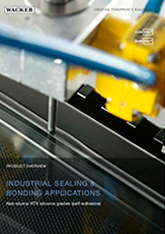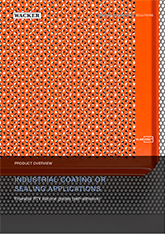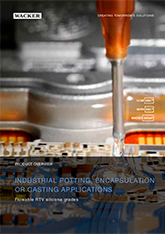Our system has noticed that you are based in , but the current country setting is . Do you still want to change your country?
- Home
- Products & Services
- Applications
- Adhesives
- Paper & Packaging
Paper & Packaging

VINNAPAS® polymer dispersions are used to formulate a broad range of paper and packaging adhesives. They are notable for their strong adhesion to a large number of substrates, very high heat resistance, excellent machinability and versatile formulation properties.
WACKER’s Technical Centers are equipped to test different formulations of paper and packaging adhesives. Here: Testing of setting speed.
Thanks to their copolymer composition, VINNAPAS® VAE dispersions can be applied to formulate plasticizer-free packaging adhesives with low migration potential and in compliance with major regulations regarding food-contact materials.
VINNAPAS® polyvinyl-acetate dispersions can be compounded to bond paper and paperboard in standard packaging and converting applications.
Benefits:
- Excellent adhesion to difficult substrates
- Very high setting speed
- Strong adhesion / cohesion balance
- Low-temperature flexibility
- Good wetting
- Compliant with food-contact regulations
Applications:
- Case and carton sealing: e.g
- Bags, pouches and sacks
- Corrugated board
- Folding boxes
- Laminating
- Paper board
Benefits:
- Excellent adhesion to many substrates, including those of low surface energy
- Low-temperature flexibility
- Very high setting speed
- Good wetting
Applications:
- Aluminum foil converting, e.g., metalized film to paper
- OPP film converting, e.g., surface-treated OPP film to paper
Benefits:
- Excellent balance between tack and cohesion
- Excellent adhesion to a variety of surfaces
- Low-temperature flexibility
Applications:
- Tape
- Labels
Product Recommendations
Sorry, no results are available for your filter criteria and selected country. Please contact one of our sales offices.
|
Products
|
Technical data
|
Suitability
|
Paper & Packaging
|
||||||||||
|---|---|---|---|---|---|---|---|---|---|---|---|---|---|
| Solids content | Viscosity, dynamic | Glass transition temperature |
Paper & Packaging
|
Tapes & Labels
|
Adhesion
|
Cleanability
|
Nozzle Application
|
Cohesion/ Heat Resistance
|
Roller/ Wheel Application
|
Setting Behavior
|
Water Resistance
|
||
| VINNAPAS® 920 | 54.0 - 56.0 % 54.0 - 56.0 % | 800 - 2000 mPa·s 800 - 2000 mPa·s | approx. -20 °C[1] approx. -4.0 °F[1] | - | - | Excellent | Medium | Medium | Medium | Medium | High | High | |
| VINNAPAS® EAF 67 | 58 - 62 % 58 - 62 % | 4500 - 9500 mPa·s 4500 - 9500 mPa·s | approx. -35 °C[1] approx. -31.0 °F[1] | Excellent | Medium | Medium | Medium | Medium | Medium | Medium | |||
[1] Glass transition temperature | DSC, specific method, [] Suited, [] Well suited, [] Ideally suited
Benefits:
- Excellent adhesion to a wide range of substrates, including those of low surface energy such as PET and PS
- Excellence balance between tack and cohesion
- Low-temperature flexibility
Applications:
- Window patching
- Side and bottom seams
Product Recommendations
Sorry, no results are available for your filter criteria and selected country. Please contact one of our sales offices.














